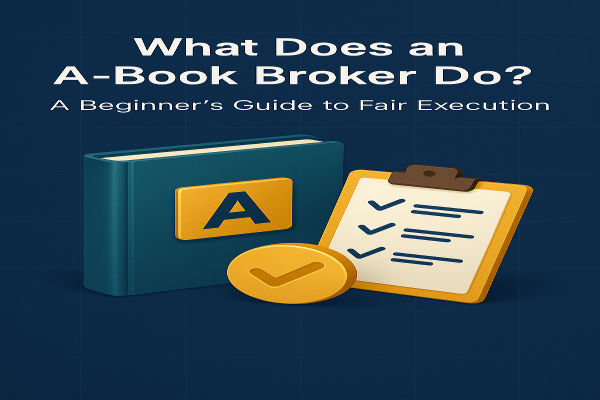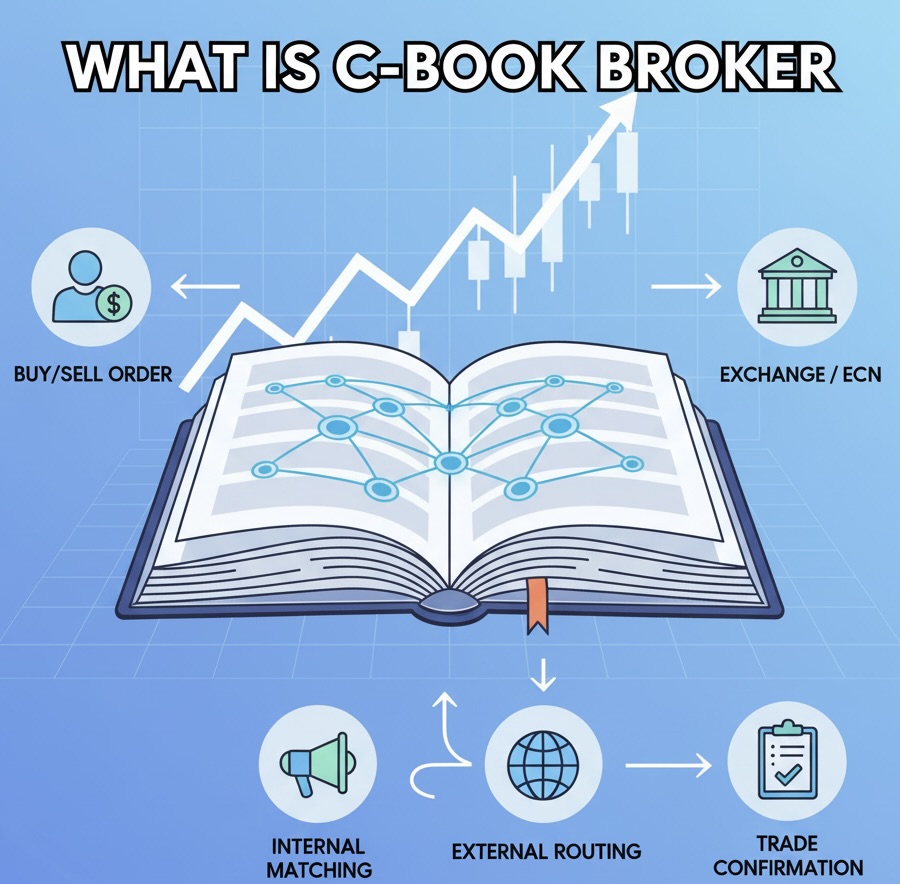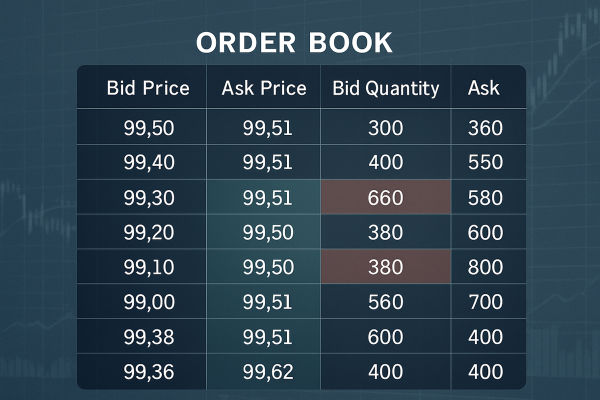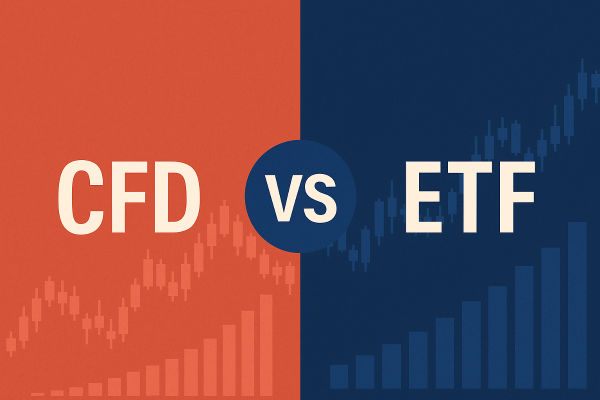Introduction
An A-Book broker is a transparent type of forex or CFD broker that routes client trades directly to external liquidity providers such as banks or institutional investors.
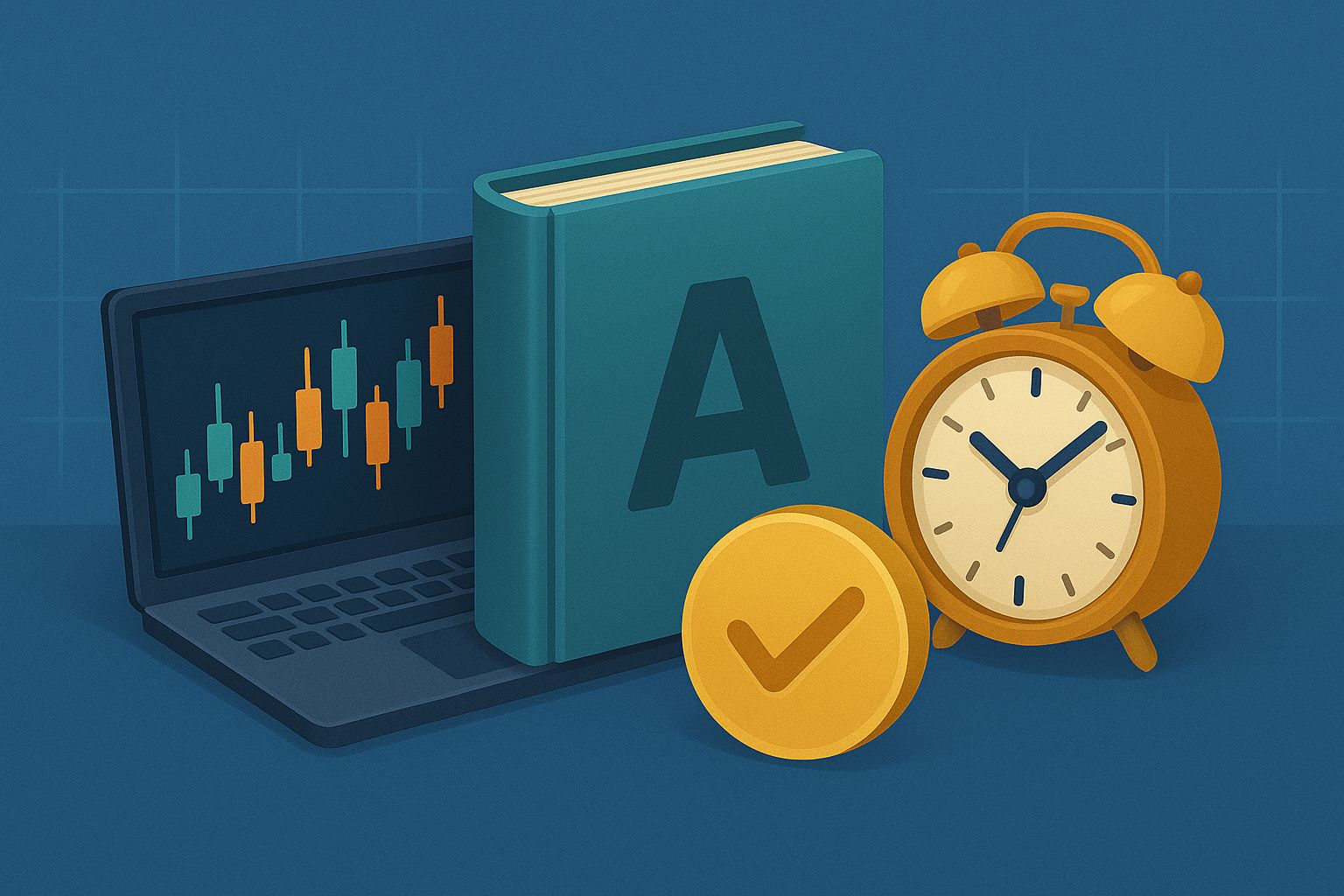
Why it matters: this setup determines whether your broker profits when you win, or when you lose.
Understanding the A-Book model helps traders choose brokers that align with their success rather than trade against them.
Definition
An A-Book broker executes client orders through Straight Through Processing (STP) or Electronic Communication Network (ECN) systems, sending trades directly to banks, hedge funds, or institutional market makers.
The broker earns from commissions or small markups on the spread, not from client losses.
This model ensures conflict-free execution where traders’ profits and broker earnings grow together.
How an A-Book Broker Works
The A-Book model acts as a bridge between traders and the wider financial market:
Step 1: A trader places an order.
Step 2: The broker sends that order directly to a liquidity provider, such as a large bank or institutional market maker, without interfering in the trade.
Step 3: The liquidity provider fills the order at the best available market price from its pool of quotes.
Step 4: The broker earns a transparent commission or small spread markup which is fully disclosed in advance.
In practice, the commission or markup depends on the broker’s business model and trading volume.
Commission-based A-Book brokers charge a fixed fee per trade, usually expressed per lot
Spread-based A-Book brokers slightly widen the bid-ask spread received from liquidity providers, often by 0.1 to 0.3 pips and this markup is visible in live quotes.
Because these charges are pre-set and non-manipulative, traders can see and calculate their exact transaction costs, ensuring full pricing transparency.
Example
For example, a trader buys EUR/USD using an A-Book broker when market quotes range between 1.0749 and 1.0751.
The broker routes the order to its network of liquidity providers such as typically large banks or financial institutions and executes the trade at the best available market price of 1.0750.
The broker then earns a small, transparent markup, such as 0.2 pips, as its service fee for facilitating the trade. This fee isn’t hidden, it's built into the spread or shown as a commission, allowing traders to see exactly what they’re paying for.
Think of it like booking a hotel room through a travel site that compares real-time prices from multiple hotels. You get the best rate available, and the platform earns a small fee for connecting you to it.
Just like how the A-Book broker connects you directly to real market prices instead of taking the opposite side of your trade.
This ensures fairness as the broker’s profit depends on the trader’s ongoing activity and success, not on whether the trader wins or loses.
Advantages and Risks
| Advantages / Benefits |
Disadvantages / Risks |
| Transparent, conflict-free execution |
Spreads may widen during high volatility |
| Direct access to real market prices |
Commission fees slightly increase cost per trade |
| No dealing desk or order manipulation |
Slippage possible in thin markets |
| Trusted by algorithmic and institutional traders |
Variable spreads reflect live conditions |
Related Terms
Liquidity Provider: A bank or financial institution that provides buy/sell quotes to brokers.
Spread: The difference between bid and ask prices, representing transaction cost.
STP (Straight Through Processing): An automated routing system that sends orders directly to the market.
ECN (Electronic Communication Network): A platform that connects multiple liquidity providers and traders for direct execution.
B-Book Broker: A broker that takes the opposite side of a client’s trade, creating a potential conflict of interest.
Frequently Asked Questions (FAQ)
1. What does A-Book mean in forex trading?
A-Book Broker refers to brokers who pass client orders directly to liquidity providers. Trades are filled by external market participants rather than being internalized by the broker.
2. How do A-Book brokers make money?
They earn through commissions or small spread markups (typically 0.1–0.3 pips), which aligns their profit with active, successful traders instead of client losses.
3. How can I tell if my broker uses the A-Book model?
Check for STP or ECN in the broker’s description or execution policy. Regulated A-Book brokers usually disclose this publicly.
Summary
The A-Book model is a transparent execution method where trades are routed directly to liquidity providers through STP or ECN systems.
It eliminates conflicts of interest, ensuring the broker earns only from commissions or small spread markups.
By connecting traders to the real market, A-Book brokers provide genuine pricing, as well as trusted and transparent in trading performance.
Disclaimer: This material is for general information purposes only and is not intended as (and should not be considered to be) financial, investment or other advice on which reliance should be placed. No opinion given in the material constitutes a recommendation by EBC or the author that any particular investment, security, transaction or investment strategy is suitable for any specific person.
